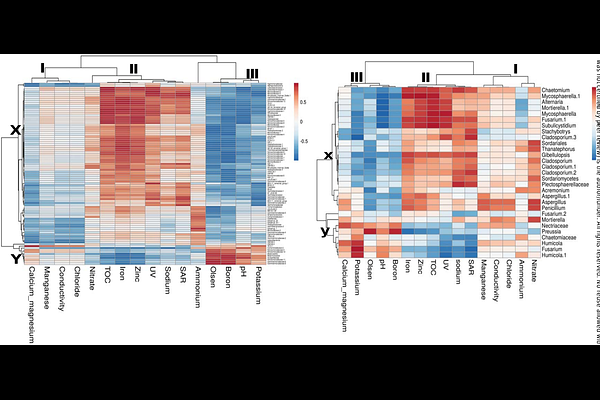Dynamics in microbial communities associated with the development of soil fatigue in banana

Dynamics in microbial communities associated with the development of soil fatigue in banana
Cohen, D.-d.; Minz, D.; Faigenboim, A.; Elingold, I.; Sher, Y.; Galpaz, N.
AbstractSoil fatigue, well-documented in various crops, presents a significant challenge to banana production by causing fast and then gradual declines in plant growth and yield over years of cultivation. Despite its impact on profitability, the underlying mechanisms driving soil fatigue remain poorly understood; however, a strong link to shifts in the soil microbiome has been suggested. We investigated the dynamics of microbial communities in relation to soil fatigue, using a novel semi-controlled outdoor experimental system. Soils at different stages of fatigue (0 to 42 months of banana cultivation) were generated in large containers filled with initially healthy soil. Banana plants grown in these soils were replaced with new plants which showed soil age-dependent growth. Three months postplanting, soil and root samples were collected for analyses of soil parameters and microbial community composition using bacterial (16S) and fungal (ITS) amplicon sequencing. We identified minor age-related shifts in mainly pH, potassium, and organic matter in the soil. While alpha diversity remained unchanged, significant shifts in bacterial and fungal community composition were observed in fatigued soils. Notably, the relative abundance of bacterial families such as Flavobacteriaceae, Pseudomonaceae, and Acidibacter increased, as did some fungal taxa (many from groups with known pathogens)-Ceratobasidiaceae (including Rhizoctonia), Dothideomycetes, and Stachybotryaceae. Simultaneously, the relative abundance of bacterial families with known beneficial members, including Gemmatimonadaceae, Moraxellaceae, Sphingomonadaceae, and Azospirillaceae, as well as symbiotic fungal taxa such as Glomeraceae and Lasiosphaeriaceae, declined. Thus, soil fatigue may be correlated to proliferation of pathogenic populations and a loss of beneficial microorganisms.